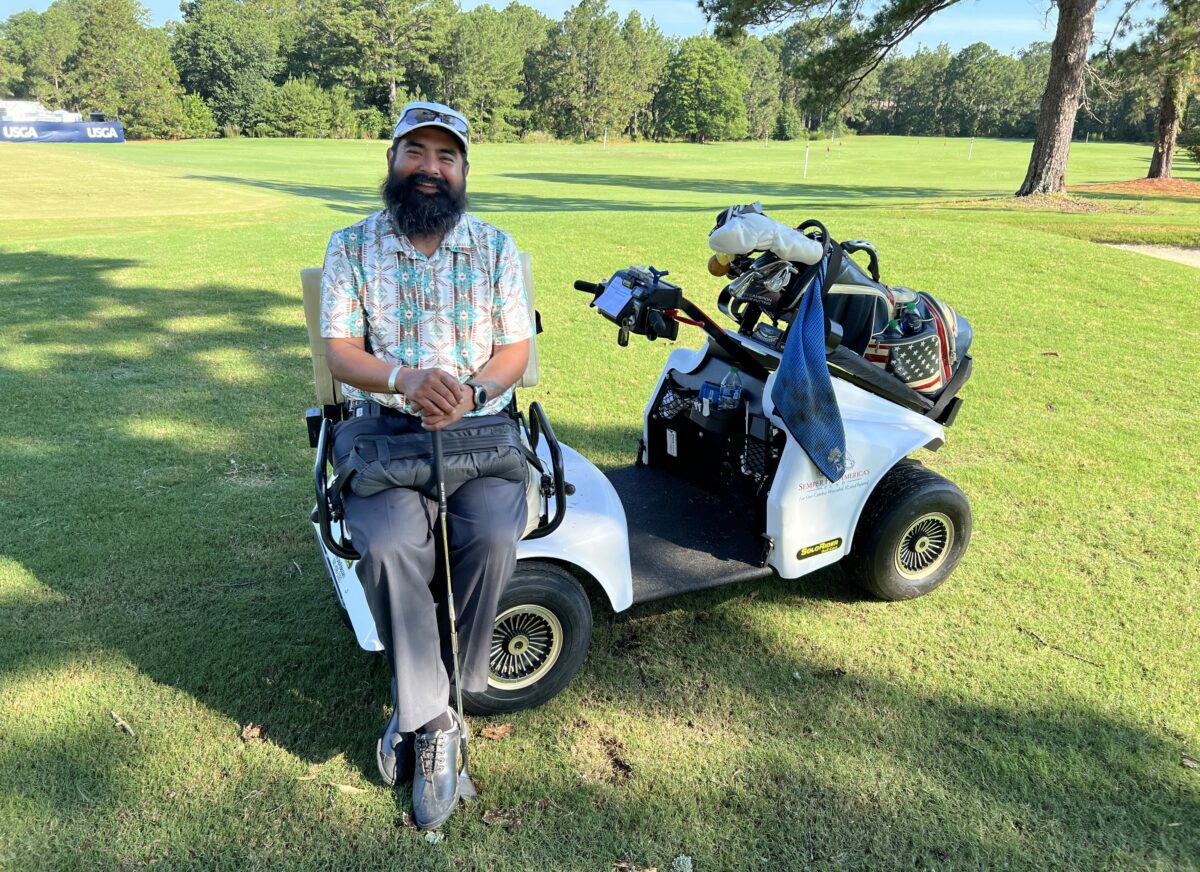VILLAGE OF PINEHURST, N.C. – Randy Shack was never in the first truck. The infantryman always went out in the second Humvee in the gunner’s position. But with his lieutenant already away on R&R, Shack moved up to the front gun, and he didn’t feel good about it.
“It was like the movies,” said Shack, of his 2007 tour in Iraq. “I’m going home the next day.”
Shack, an Army infantryman from Sulphur Springs, Texas, was relieved to have made it through the 12-hour shift without incident. It was time to go back to base, he thought. That is, until word came down that they had one fragmentation mission left to do.
“Oh, this is it,” he thought. “This is it.”
The Vehicle Born Improvised Explosive Device the Humvee hit confirmed Shack’s worst fears. It was the fifth time he’d been involved in an IED explosion.
“Seven times you don’t have to go out anymore,” said Shack. “It’s like a punch card.”
Several of Shack’s friends reached seven and were diagnosed with traumatic brain injury. While that didn’t happen to Shack, not long after he returned from Iraq, just before his 26th birthday, he found that he could no longer sit up straight. The deterioration came swiftly, and doctors found the spinal cord damage too great to repair.

For years, he scarcely left the house, not wanting to go out in public in a wheelchair. Even to the grocery store.
“After I got out, I spent about 10 years in the bottle,” he said. “I didn’t know what else to do.”
The breaking point for Shack came at home in the garage, when 3-year-old son Raiden opened the fridge and handed his father a beer. He knew the routine.
“Our daughter’s wedding was at the same time,” said Shack. “I don’t remember it.”
He choked up at the memories.
It was the PGA HOPE (Helping Our Patriots Everywhere) program that Shack said gave him a second life. Seven years ago, he sat in his truck for 30 minutes trying to decide if he wanted to get out that first day. That first round, he stayed in his wheelchair and used junior clubs.
Now he’s one of 96 competitors at the inaugural U.S. Adaptive Open, where he’s one of seven players competing in the Seated Player category. Other impairment categories include arm, leg, neurological, vision, multiple limb amputee, short stature and intellectual. Shack, a 12-handicap, opened with a 95 at Pinehurst No. 6 and came off the course still smiling under that thick black beard.
“I can’t even put into words what it means,” said Shack of competing in a national open. “It’s life-changing almost.”
U.S. Army veteran Randy Shack shows how his SoloRider works ahead of the U.S. Adaptive Open. pic.twitter.com/8C9m6s2oAj
— Beth Ann Nichols (@GolfweekNichols) July 18, 2022
With his SoloRider cart, Shack can drive on the greens and in bunkers without causing any damage. The electric seat swivels to the side of the cart and raises up so that Shack, while strapped in, can hit a golf ball.
Eric Hatch, director of SoloRider carts and Shack’s close friend and caddie, drove a trailer from Texas to Pinehurst with seven SoloRiders; six are being used in this tournament.
When the pair first met, they celebrated shots that traveled 75 yards. Now, Hatch said Shack is the longest seated player in the game, hitting 230 yards off the tee consistently and as far as 285 back home when he hits the speed slot on a certain par 5.
While Shack has worked on his fitness, a proper fitting, Hatch said, is what took his game to the next level.
This is Randy Shack. He’s competing in the Seated Players category. I’ll have more on Randy later. You’ll want to follow this soldier’s story. pic.twitter.com/DhLXBW9po3
— Beth Ann Nichols (@GolfweekNichols) July 18, 2022
Now a PGA HOPE ambassador for the North Texas section, Shack knows the program can be life-saving for veterans, and he’s eager to share how golf has changed his life. Next year, he’ll travel to the Home of Golf as part of the St. Andrews Legacy program for veterans.
“Adapt and overcome,” said Shack.
It’s the mindset required of everyone in this field.
Shack and his family recently moved out to the country in Texas, where donkeys, miniature potbelly pigs, cinnamon queen chickens, goats and turkeys share their land. Son Raiden isn’t really into golf, but sometimes he’ll hit it around the pasture with dad.
Seven years ago, Shack saw a flier for the PGA HOPE program at his local Veterans Affairs’ Spinal Cord Unit, and that flier changed his life.
“If it wasn’t for golf,” he said, “I’d still be at home drinking.”
No telling how many lives he’ll change now.
How to watch
While there will be no full television coverage of the event, fans can watch near real-time highlights and feature stories during Golf Today (noon-2 p.m. ET) and Golf Central (4-5 p.m. ET) on Golf Channel all three days (July 18-20). The trophy ceremony will be shown July 20 on Golf Central.
[listicle id=778285135]
